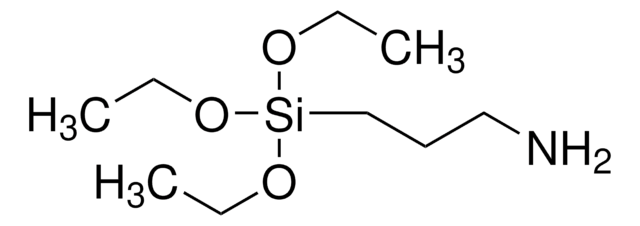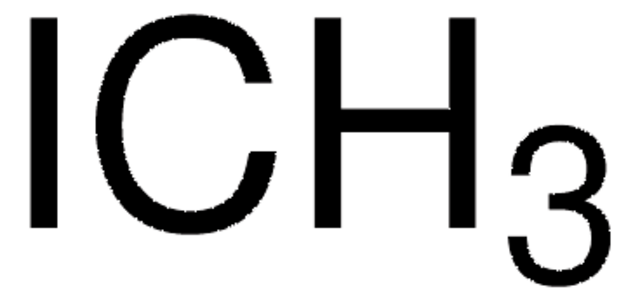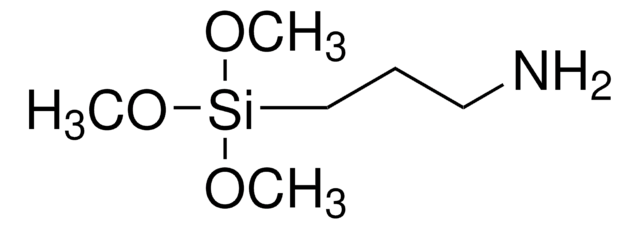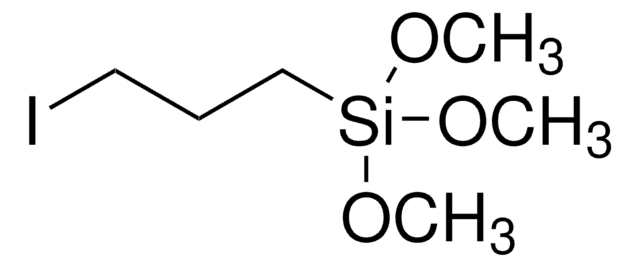413364
3-(Triethoxysilyl)propyl isocyanate
95%
Synonym(s):
Triethoxy(3-isocyanatopropyl)silane, (3-Isocyanatopropyl)triethoxysilane
About This Item
Recommended Products
Quality Level
Assay
95%
form
liquid
refractive index
n20/D 1.42 (lit.)
bp
283 °C (lit.)
density
0.999 g/mL at 25 °C (lit.)
functional group
amine
isocyanate
SMILES string
CCO[Si](CCCN=C=O)(OCC)OCC
InChI
1S/C10H21NO4Si/c1-4-13-16(14-5-2,15-6-3)9-7-8-11-10-12/h4-9H2,1-3H3
InChI key
FRGPKMWIYVTFIQ-UHFFFAOYSA-N
Looking for similar products? Visit Product Comparison Guide
Application
- As a bifunctional reagent (isocyanate and ethoxysilyl groups) for the immobilization of cellulose derivatives onto silica matrix to generate bonded type of chiral stationary phases (CSPs).
- To convert 5-amino-1,10-phenanthroline into 5-(N,N-bis-3-(triethoxysilyl)propyl)-ureyl-1,10-phenanthroline, a hydrolysable sol–gel precursor.
- To synthesize ruthenium bipyridyl tethered porous organosilica(Ru-POS) for organo-photocatalysis.
- To synthesize nanoparticle-supported oxime palladacycle catalyst for Suzuki-Miyaura cross-coupling reaction.
Signal Word
Danger
Hazard Statements
Precautionary Statements
Hazard Classifications
Acute Tox. 1 Inhalation - Acute Tox. 4 Dermal - Acute Tox. 4 Oral - Eye Dam. 1 - Resp. Sens. 1 - Skin Corr. 1B - Skin Sens. 1
Storage Class Code
6.1A - Combustible acute toxic Cat. 1 and 2 / very toxic hazardous materials
WGK
WGK 3
Flash Point(F)
223.7 °F - closed cup
Flash Point(C)
106.5 °C - closed cup
Personal Protective Equipment
Choose from one of the most recent versions:
Already Own This Product?
Find documentation for the products that you have recently purchased in the Document Library.
Our team of scientists has experience in all areas of research including Life Science, Material Science, Chemical Synthesis, Chromatography, Analytical and many others.
Contact Technical Service





![1,8-Diazabicyclo[5.4.0]undec-7-ene 98%](/deepweb/assets/sigmaaldrich/product/structures/120/564/5b373e23-1624-489c-8efb-692de0f96ffb/640/5b373e23-1624-489c-8efb-692de0f96ffb.png)





